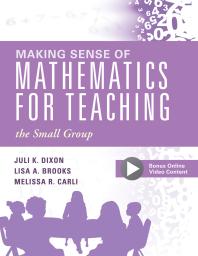Books
Mathematics Books

The Essence of Mathematics Through Elementary Problems
The Essence of Mathematics consists of a sequence of 270 problems – with commentary and full solutions. The reader is assumed to have a reasonable grasp of school mathematics. More importantly, s/he should want to understand something of mathematics beyond the classroom, and be willing to engage with (and to reflect upon) challenging problems that highlight the essence of the discipline.

Introduction to Financial Mathematics Concepts and Computational Methods
Introduction to Financial Mathematics: Concepts and Computational Methods serves as a primer in financial mathematics with a focus on conceptual understanding of models and problem solving. It includes the mathematical background needed for risk management, such as probability theory, optimization, and the like. The goal of the book is to expose the reader to a wide range of basic problems, some of which emphasize analytic ability, some requiring programming techniques and others focusing on statistical data analysis. In addition, it covers some areas which are outside the scope of mainstream financial mathematics textbooks. For example, it presents marginal account setting by the CCP and systemic risk, and a brief overview of the model risk. Inline exercises and examples are included to help students prepare for exams on this book.

New Scientist Instant Expert: How Numbers Work
How Numbers Work takes a tour of this mind-blowing but beautiful realm of numbers and the mathematical rules that connect them. Not only that, but take a crash course on the biggest unsolved problems that keep mathematicians up at night, find out about the strange and unexpected ways mathematics influences our everyday lives, and discover the incredible connection between numbers and reality itself.

Multivariable Calculus
This book covers the standard material for a one-semester course in multivariable calculus. The topics include curves, differentiability and partial derivatives, multiple integrals, vector fields, line and surface integrals, and the theorems of Green, Stokes, and Gauss. Roughly speaking the book is organized into three main parts corresponding to the type of function being studied: vector-valued functions of one variable, real-valued functions of many variables, and finally the general case of vector-valued functions of many variables. As is always the case, the most productive way for students to learn is by doing problems, and the book is written to get to the exercises as quickly as possible. The presentation is geared towards students who enjoy learning mathematics for its own sake. As a result, there is a priority placed on understanding why things are true and a recognition that, when details are sketched or omitted, that should be acknowledged. Otherwise the level of rigor is fairly normal. Matrices are introduced and used freely. Prior experience with linear algebra is helpful, but not required.

Making Sense of Mathematics for Teaching the Small Group : (Small-Group Instruction Strategies to Differentiate Math Lessons in Elementary Classrooms)
When done right, small-group instruction is a powerful tool for facilitating student understanding in K-5 mathematics. Throughout the book, best practices for small-group math instruction are addressed in detail, from planning tasks that encourage deep understanding to asking effective questions to engaging learners in meaningful conversations. Readers will learn how teaching mathematics in small groups allows you to differentiate instruction for both remediation and enrichment. The included small-group instruction videos demonstrate the suggested strategies in a real-classroom setting, giving readers the opportunity to see best practice in action. Develop math-specific instruction strategies for teaching small groups in elementary school: Explore the benefits of small-group math activities and how these activities are unique compared to large-group instruction. Discover the teacher's and students' roles in small-group instruction and how teachers can help students develop the skills to fulfill their role.
Other Libraries
 If you can't find the book you want you can always check the WorldCat Catalog to see if it is in a nearby library. SFC Library is a member of Academic Libraries of Brooklyn (ALB). If you request an ALB card from the Reference Desk you can visit six other academic libraries.
If you can't find the book you want you can always check the WorldCat Catalog to see if it is in a nearby library. SFC Library is a member of Academic Libraries of Brooklyn (ALB). If you request an ALB card from the Reference Desk you can visit six other academic libraries.
You can also request an Interlibrary Loan from another library by filling out the form below.